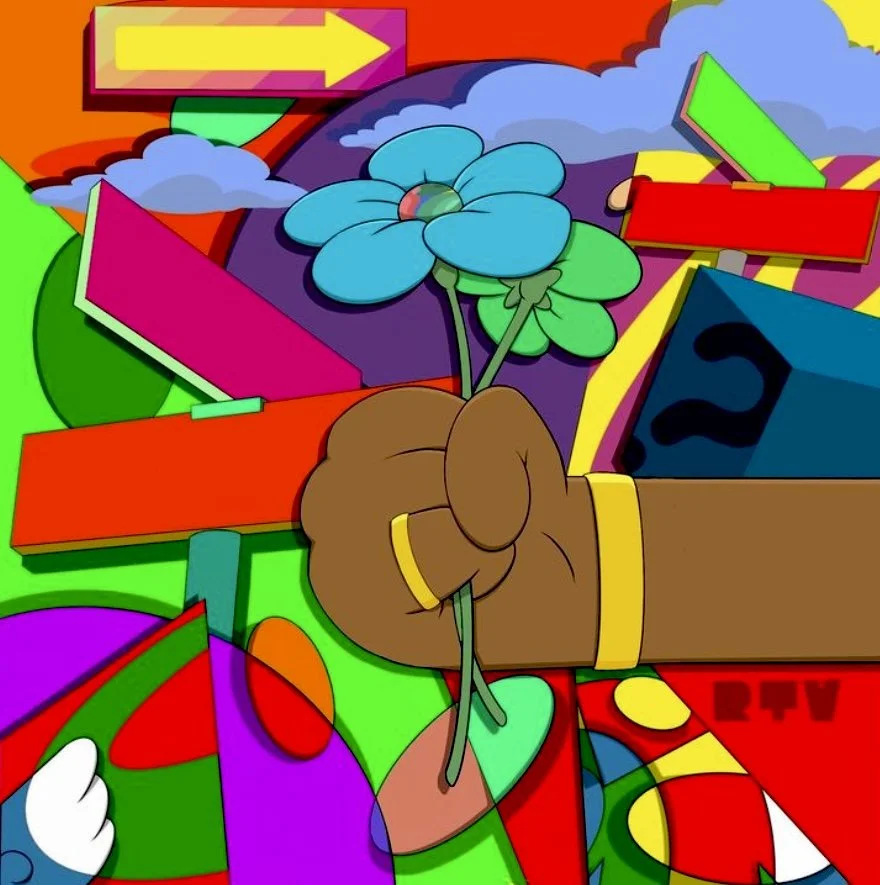Dear Readers, I hope you’re listening. Sincerely, A Concerned Creative
@ReggTrippyVizuals, We Need Ours, 2021
Short conversations can tell you a lot about a person. I have seen this time and time again in simple interactions where I have been asked the question: “What are you studying in school?” Although this is a pretty general question that many people ask, it is a person’s reaction to your response that tells you a lot. I say this because I have been on both ends of the spectrum and have witnessed two very different outcomes of this particular situation. When I was first asked this question I was protected from judgment because I was a neuroscience major. Whereas, after changing my major to mass communication, my answer warranted a different response. I made the choice to follow what I love versus something that I liked and thought was safe. This exposed me to the reality that certain areas of study are “worth” more respect than others.
The belief that STEM or some sort of business degree is more important and respectable must be put to rest. The lack of public trust in people that choose to pursue the arts and humanities is absolutely ridiculous, and extremely problematic. Not only does this societal programming of thought censor creativity, it fails to recognize the contribution, brilliance and necessity of liberal arts. The truth is, a world without the arts and humanities would be dull in every single way imaginable. The arts and humanities are woven into the fabric of society, regardless of a person’s education, field of study, or profession. In some form the arts is something that we all experience on a daily basis. Whether it is literature, music, museums, or television, everyone engages in the arts at some point in their lives.
Despite being frequently stereotyped as disconnected from everyday life and societal progress, artists play a vital role in our cultural heritage, and their creations often form an indispensable part of community life. The American Academy of Arts and Sciences did a study that gauged the overall opinions of Americans about the work of artists. Amongst other occupations, they asked Americans how much artists “contribute to the general good of society.” This study found that 64 percent of people believe the arts contribute “a lot” or “some,” and only 22 percent answered “a lot.” The results indicated that the majority of Americans value the arts, in fact 81 percent of Americans believe the arts have a positive experience in a “troubled world.” Contrarily, Americans do not always place value on those who create that art.
This brings me to a series of questions: Why is it that something of immense importance lacks recognition or consideration? Is there a disconnect between the artists and the general public? Is it about reaching a broader public, or just targeting people that are already interested in the arts? Is it the role cultural institutions play in education and accessibility? In large cultural institutions, does the circulation of work from other countries overshadow the work and talent of local independent artists? Why is there lack of funding for the arts, while STEM receives support from politicians, CEOs, educators, and other organizations? Why is one field of study regarded as culturally successful while the other is deemed culturally taboo? After researching, I realized that there were a lot of articles measuring the gaps in my connections, some even providing potential solutions to fill it, but not enough people consistently carrying out promises.
Accomplishing changes entails a long-term global commitment to the arts, this starts with first dismantling the belief that art is impractical and only recreational. Society needs to truly understand that artists put great effort, time, and money into making their creations.The public fails to realize this and expects artists to give, and for nothing in return. Given the multiple areas artists are a part of in society, far too often they are left underrecognized, underrepresented, and undervalued by funders, policymakers, community developers, social change organizations, curators, museums, the media, and the public at large. Yes, STEM education is important, but you are deeply misguided if you believe that it comes at the expense of the arts and humanities.
Art is a language that transcends borders, time, and helps us understand and appreciate other cultures. For me, art is something that grounds me, brings me comfort, and allows me to express myself. Speaking on the behalf of other artists, art is first personal and develops from your core, but it has the ability to slowly blossom into something greater. Rhetoric that dismisses the liberal arts and humanities is dangerous because it engenders a cycle of not taking accountability. So I humbly ask you readers, is it time to feed the “starving artists”?
Liza Montgomery, Untitled, 2023
Sources:
https://www.archives.gov/research/african-americans/black-power/arts
https://hechingerreport.org/opinion-kill-liberal-arts-demonize-people-ideas/
https://www.urban.org/sites/default/files/publication/50806/411311-Investing-in-Creativity.PDF
https://instituteofradicalimagination.org/the-school-of-mutation-2020/som-iterations/the-future-of-art-institutions/
https://www.linkedin.com/in/donna-walker-kuhne-7577803/
https://www.amacad.org/news/american-opinions-about-artists
https://walkercommunicationsgroup.com/2022/10/09/a-new-chapter-for-americas-arts-and-culture-institutions/
https://www.jstor.org/stable/3542577
https://instituteofradicalimagination.org/the-school-of-mutation-2020/som-iterations/the-future-of-art-institutions/



